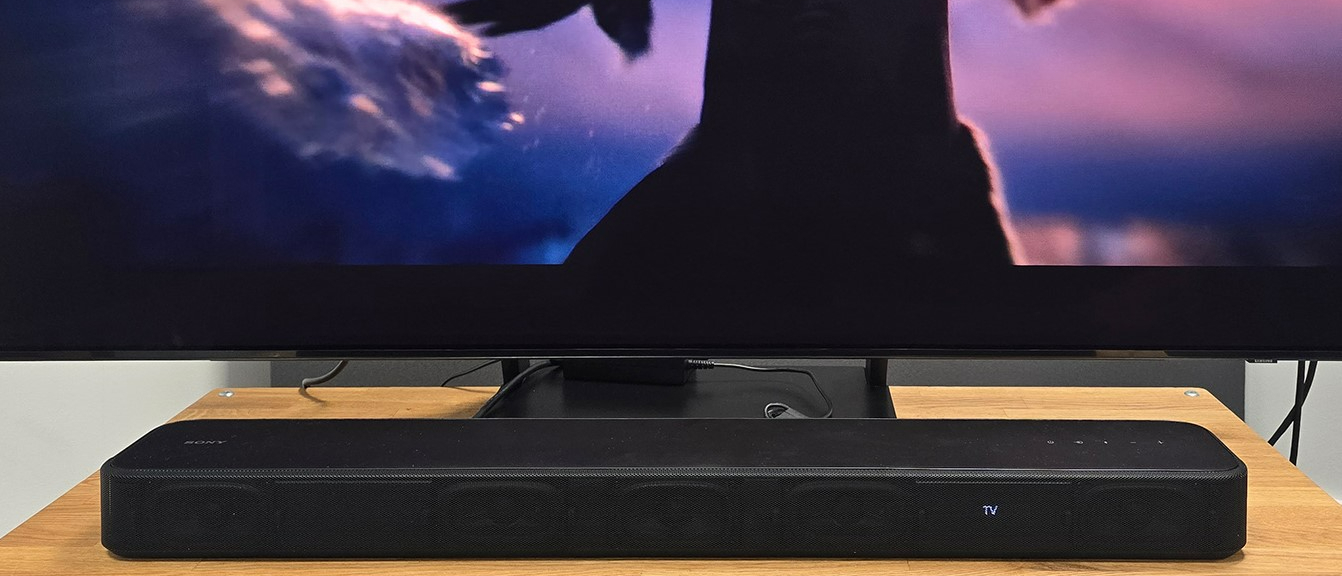
Sony has struck a chord with its HT-A series soundbars in recent years. The flagship HT-A7000 has become a serial Product of the Year winner, while its smaller siblings, the HT-A5000 and HT-A3000, both earned very favourable reviews. That being said, even the cheapest of those bars will be too expensive for some people, so what if you want a Dolby Atmos-equipped Sony soundbar that's truly affordable?
Enter the HT-S2000, a soundbar that’s centred on fundamentally improving the sound that comes from your TV while keeping the cost as low as possible. There are few frills to find here, with Sony opting for a straightforward soundbar; but has it nailed the formula? We certainly think so.
Price
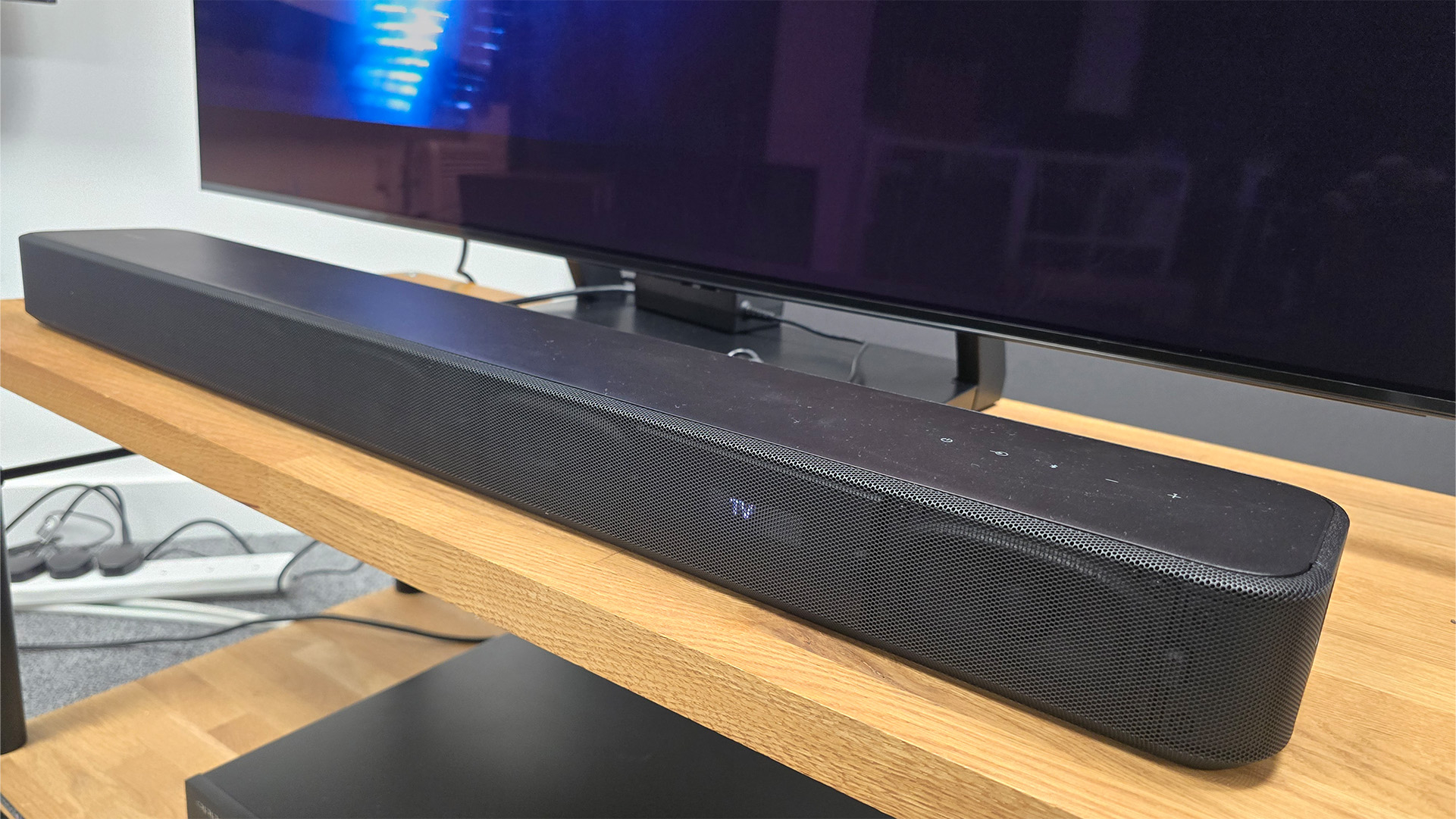
The Sony HT-S2000 originally launched at a price of £449 / $500 / AU$695, but it has dropped since then and is at the time of writing available for just £349 / $300 / AU$595 at some retailers.
It appears that the S2000 is replacing the HT-G700, a cheap Dolby Atmos model that’s been a mainstay on our best budget soundbar list for quite some time. That soundbar was priced at £399 / $598 / AU$899 when it launched in 2020, and it included a dedicated subwoofer, which the HT-S2000 does not.
Competition from other brands is fierce, with the Award-winning Sonos Beam (Gen 2) looming at £499 / $499 / AU$799. JBL offers the Bar 300 for roughly the same price as the Sony at £330 / $400 / AU$529, too, making it a direct rival.
Build
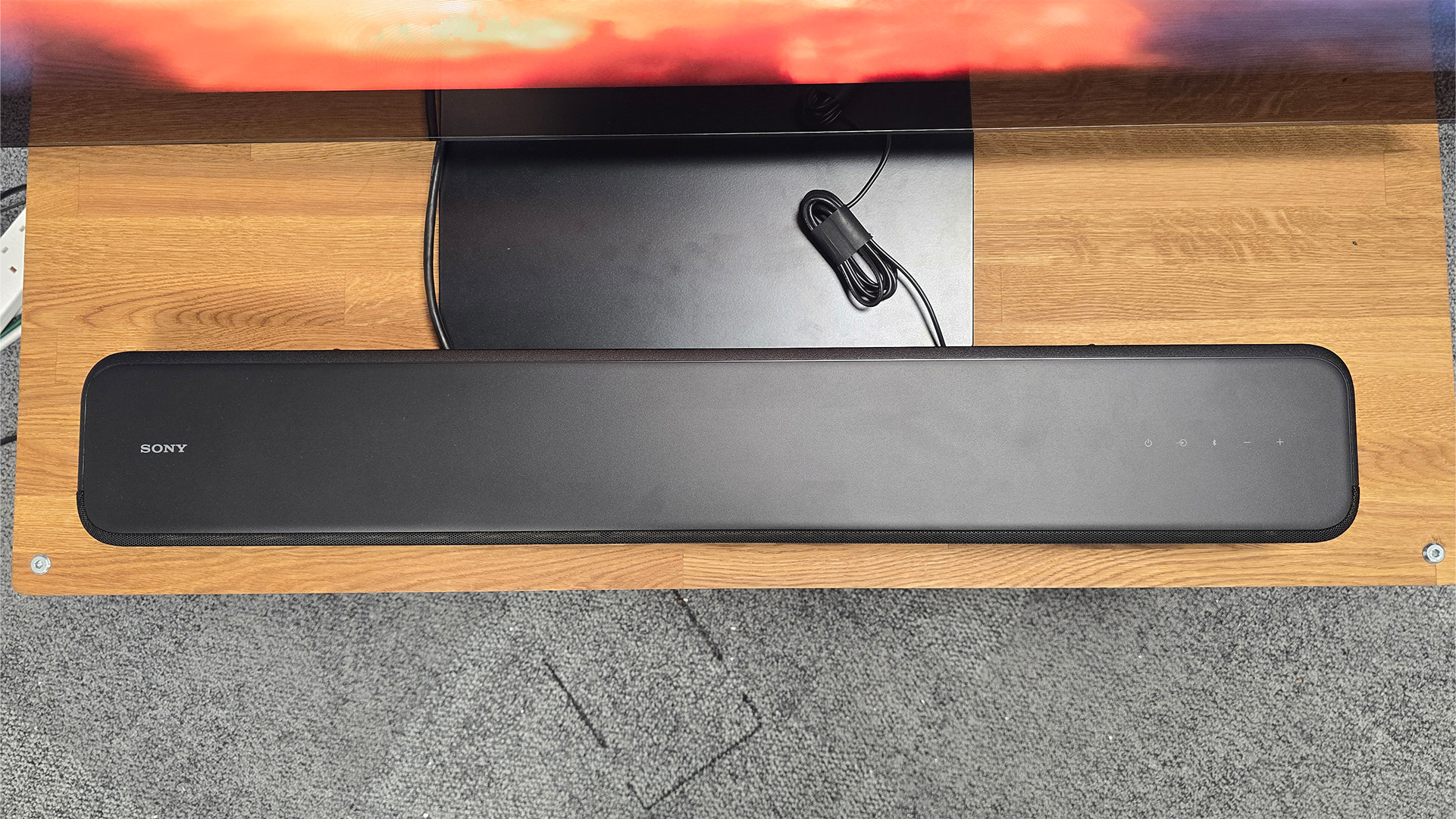
The exterior shell of this soundbar is the first hint at the no-frills approach Sony has taken with this soundbar. Frankly speaking, the design is functional, but not exactly eye-catching. It is, however, a pleasantly petite unit as it measures just 6.4 x 80 x 12cm (hwd). It sits neatly below the TV we’ve paired it with for testing without blocking the screen and doesn’t dominate our media rack.
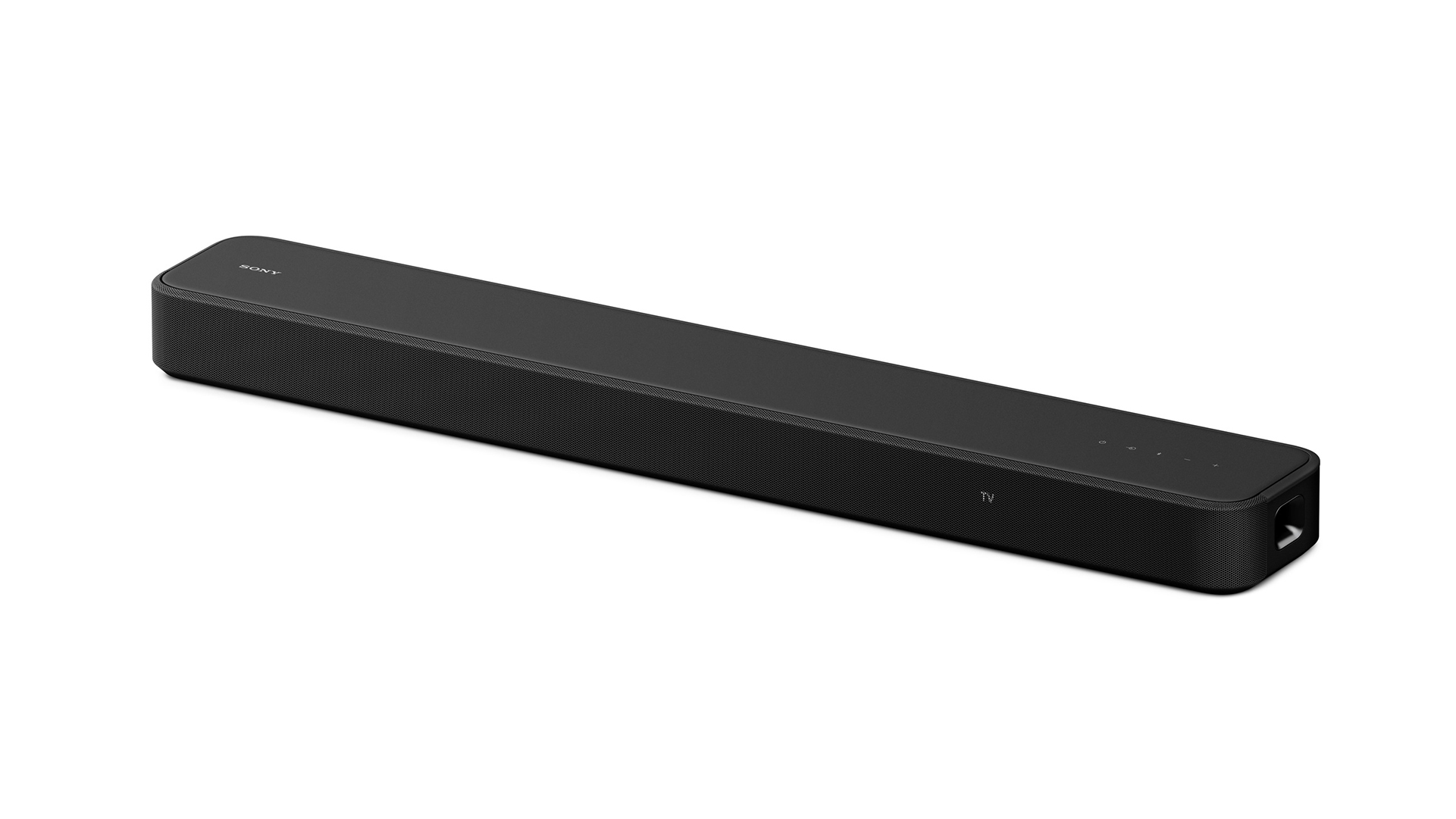
Connectivity HDMI out (eARC), Optical
Sound format support Dolby Atmos, DTS:X
Bluetooth? Yes, 5.2
Voice control? No
Dimensions (hwd) 6.4 x 80 x 12cm
Weight 3.7kg
The soundbar's plasticky construction doesn’t try to emulate that of its premium counterparts, and the only notable build feature is a small LED display on the right-hand side of the unit that shows minimal information about volume, sound modes and input. It’s simple, but it works and we value that more than overcomplicated design elements that ultimately under-deliver.
We spin the bar around and find that this ethos continues. There are sockets for power, HDMI eARC, optical audio, USB, and that’s your lot. The remote control for this unit is also as straightforward as it comes: there is a total of 10 buttons on this that include power, input, volume, mute, Night mode, Sound Field mode, Voice mode and bass adjustment. The remote itself is small and likely destined to slip between couch cushions, but it gets the job done. If you do misplace the remote, then you can use the power, input, Bluetooth and volume buttons on the top panel of the soundbar.
If we have one criticism of the soundbar's design it's that the angled ports that Sony opts for on all of its bars can be a nuisance if you have a particularly stiff HDMI cable. We prefer the flat, rear-facing ports of the Sonos Beam Gen 2 in this regard, as they’re easier to access and don’t butt heads with stubborn HDMI cables.
Features
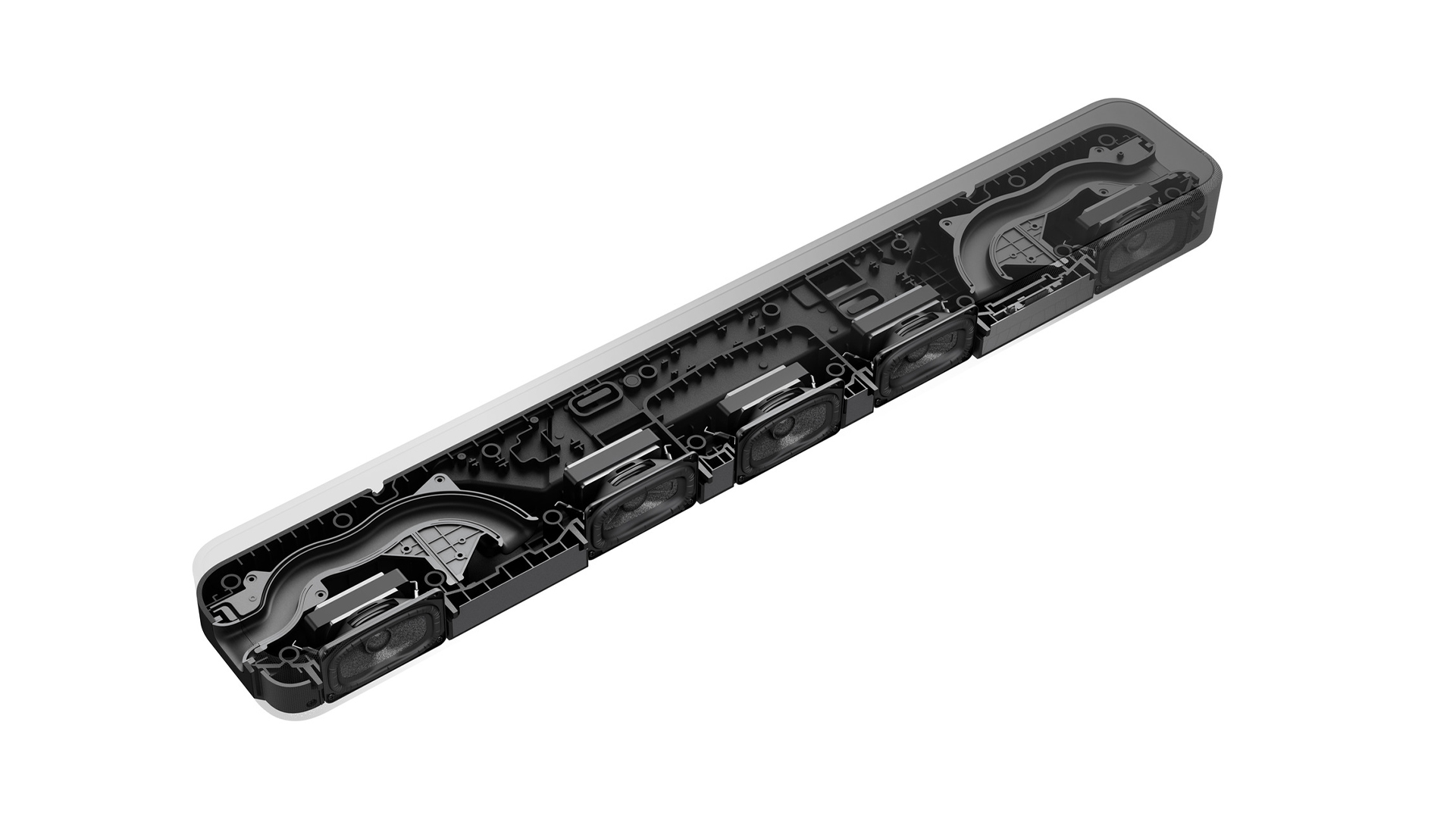
We’ll start with the set-up, as that really lays the foundation for what this soundbar is all about. We unwrap the S2000 from its claimed 95 per cent recycled packaging, plug the power and HDMI cables in, and we’re done. While Sony offers an app if you’d like to use it, it doesn’t really add much to the experience other than replicating controls you can already find on the remote. There’s no lengthy sign-in process to use the soundbar, or automated calibration system to sit through; just good old-fashioned plug-and-play.
The S2000 features a 3.1-channel arrangement with a built-in subwoofer and a total power output of 250W. There are three X Balance speaker units within the bar, with the centre channel driver designed to enhance dialogue clarity. These Sony-designed drivers feature on many of the brand's other audio products and claim to deliver 'powerful, spacious sound and a more rewarding listening experience'.
There are no upward-firing drive units, which means that the height channels for the supported spatial audio formats (Dolby Atmos and DTS:X) are achieved through Sony’s Vertical Sound Engine psychoacoustic sound processing system. Sony does offer a range of wireless satellite surround speakers and subwoofers that can be paired with the S2000 if you want to expand your experience with rear channels and meatier bass, but we’re reviewing the S2000 as it comes.
We’ve already mentioned the physical connectors, but there is also the option to stream wirelessly from a phone or tablet. Much like the rest of the soundbar, this is incredibly simple and intuitive, with no option for streaming over wi-fi. Instead, Bluetooth 5.2 features here, with a simple pairing process and support for the AAC and SBC codecs.
Sony also includes a plethora of sound processing modes designed to adapt the sound output for specific situations. Sound Field mode, which appears on various Sony soundbars and AVRs, expands the spread of sound and attempts to enhance the sense of scale. Night mode compresses louder sound effects (such as explosions) while keeping dialogue at an audible level, and Voice mode prioritises dialogue clarity by bringing it to the forefront of the audio mix. Finally, there are three bass levels that you can choose from, depending on your personal preference for low-end.
Sound
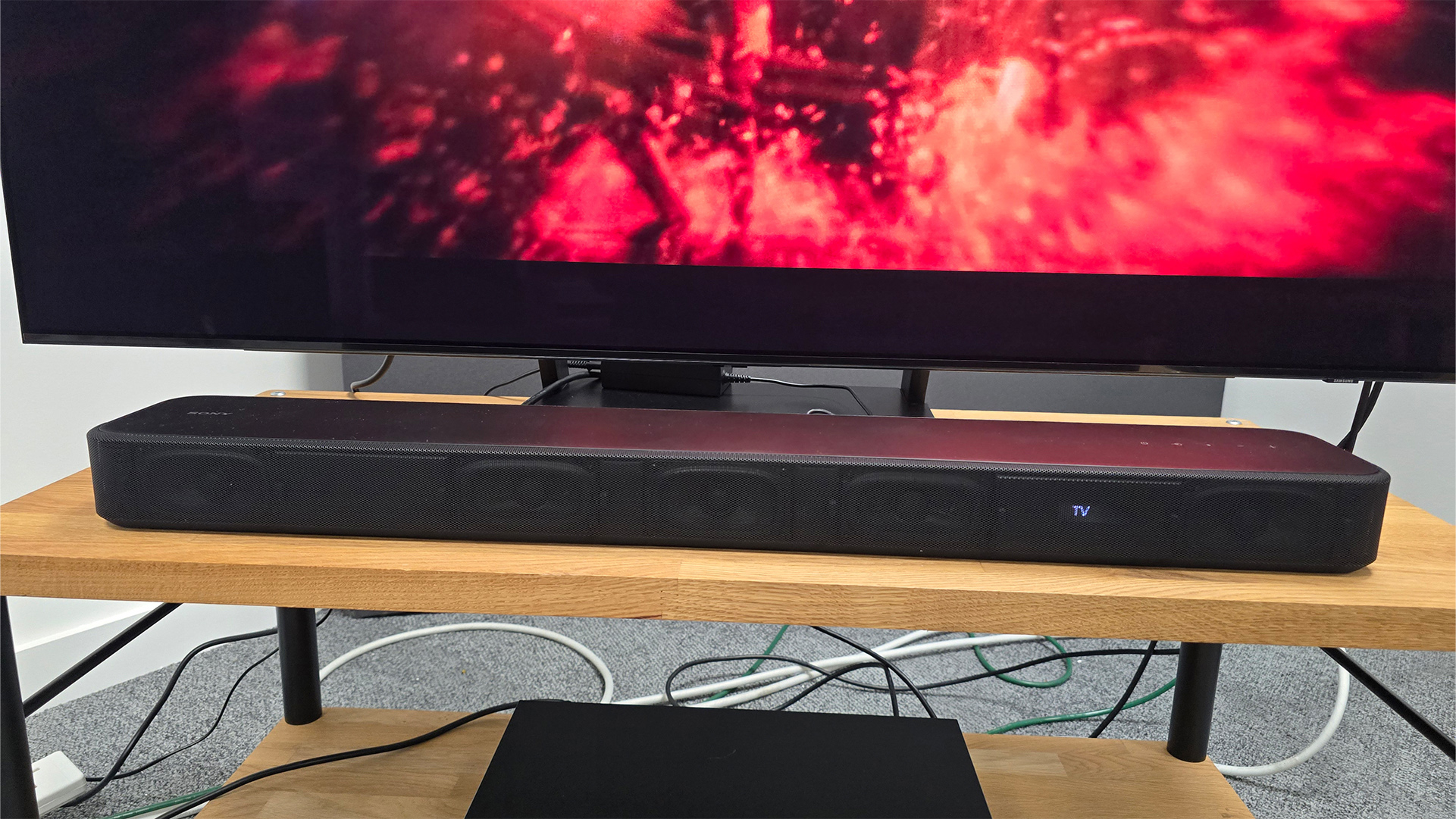
Sony has opted to cut back on the build and feature set of this soundbar in order to focus on sound – after all, the main intention of a soundbar is to improve the audio that’s coming from your TV. Thankfully, the S2000 succeeds in this endeavour to surprising effect, especially when we remind ourselves of how little it costs.
Starting with Batman Vs Superman: Dawn Of Justice’s warehouse fight scene, we’re pleasantly surprised at how clear this soundbar sounds. The grizzled tone of Batman, as he strategises with Alfred before launching into the warehouse to lay the smackdown on Lex Luthor’s goons, is crisp and detailed. The subtle clicks of the thugs’ weapons and tense shuffling movements while they wait for the Dark Knight to burst through the door are all clearly defined, too.
When Batman finally does make his surprise entrance through the floor, there is a satisfying punch of dynamics to convey the explosion of floorboards. As fists (and bodies) start flying, there is a crisp and impactful thud to each hit, and this bar’s dynamic capabilities are shown off in further detail with the culmination of the scene when Batman crashes through a wall in dramatic fashion.
The directionality of sound is also nicely handled, as it follows the Batwing as it soars off-screen towards the end of this sequence. It’s not as effective as the full-fat Atmos bars we’ve tested before, but it's a solid attempt from a soundbar that’s working with fewer physical drivers. The Sony is best suited to smaller rooms, though, and will struggle to impress in living rooms that are on the very large side.
The HT-S2000's preference for small rooms is to be expected, but it does have flaws besides that. For example, some sound effects (such as Baterang clangs) can sound a little overpronounced and bright, although we do have to listen closely to really notice this. What’s much more noticeable is the downgrade in sound quality when we turn on the Sound Field setting. In an attempt to broaden the scale of the sound, the Sony loses a lot of focus and definition, leaving us with a mushy and unfocused delivery. We prefer the more accurate if slightly smaller scale sound that the regular processing mode offers.
Switching over to Oppenheimer, we get another chance to mull over how this soundbar handles dialogue in a more subtle, conversational situation. In the scene towards the beginning in which the titular physicist meets and converses with Niels Bohr, we can pick up subtle tonal variations in the characters' voices, which add an emotive quality to the dialogue. While we’ve certainly heard more expressive soundbars, the Sony puts up a solid performance that sounds more engaging than some soundbars we’ve tested at double the price.
Speaking of more expensive soundbars, we deploy the Sonos Beam Gen 2 to see how it compares with the HT-S2000 when playing the Oppenheimer scene. The Sonos excels at adding additional warmth and richness to the performance, presenting natural and textured dialogue from Murphy and Branagh. It’s also a touch more spacious and detailed in the ensuing montage scene, which features a sweeping score and plenty of challenging sound effects. We do feel, though, that the Sony features slightly deeper bass extension, which adds some extra oomph to the sound effects of the spinning particles that Oppenheimer visualises.
We ditch the TV and Blu-ray player for a music test, opting for the Tidal and Bluetooth combo. Since this bar doesn’t support wi-fi streaming options, we can’t take advantage of the highest-resolution audio option from Tidal, but we can live with that. A quick burst of Florence And The Machine’s Rabbit Heart (Raise It Up) reveals that this isn’t the most musical soundbar we’ve ever tested, but it gets the basics right. Vocals are clear, there is a solid sense of timing and dynamics and nothing sticks out in a particularly jarring fashion.
This is, however, where the Beam Gen 2 makes the biggest headway over the HT-S2000, as the richer, meatier sound it produces is undeniably more engaging. The Beam comparison boils down to this: is the sound upgrade of the Beam worth an additional third of the price of the Sony? Being the sonic snobs we are, we believe it is, but the Sony isn't a million miles off, so if that extra saving over the Sonos is important to you, it will serve you well.
Verdict
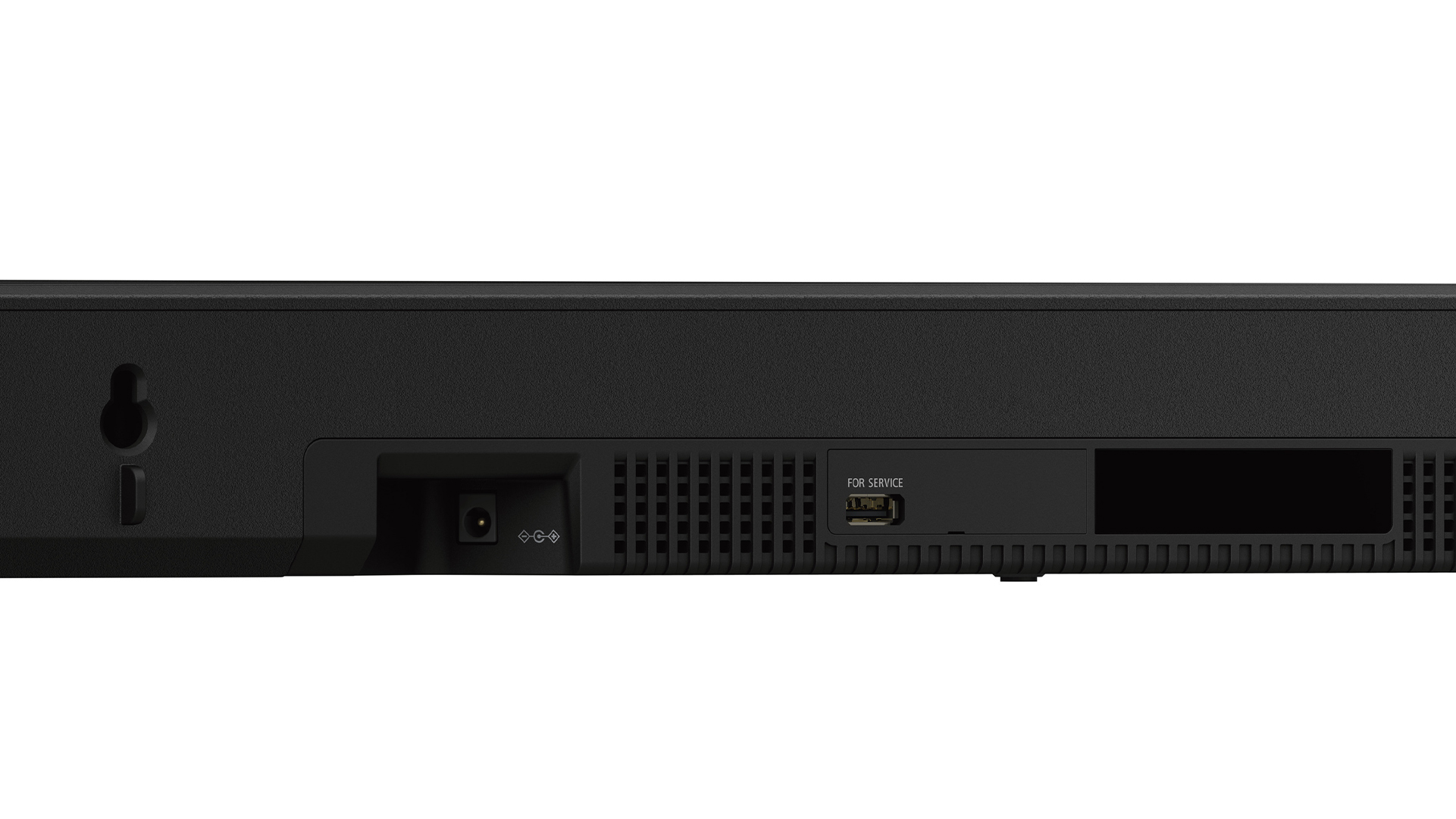
We’ve grown rather fond of this plucky little Sony soundbar during our testing. We admire a product that knows what it has to offer and doesn’t try to spread itself thin by cramming in superfluous features. We’re willing to bet that the Sony HT-S2000 sounds better than your TV’s built-in speakers, which is the exact goal that Sony has aimed for here.
If you want clearer, more dynamic and direct sound from your TV at a price that won’t put you off, then the Sony really is an easy sell. You can spend more on meatier-sounding and more feature-rich soundbars, but at this price the Sony is an underdog that we’re happy to root for.
SCORES
- Sound 5
- Build 4
- Features 4
MORE:
Read our review of the Sonos Beam Gen 2
Also consider the Sonos Ray
Read our Sony HT-A3000 review
Best soundbars: options for every budget, recommended by our experts







